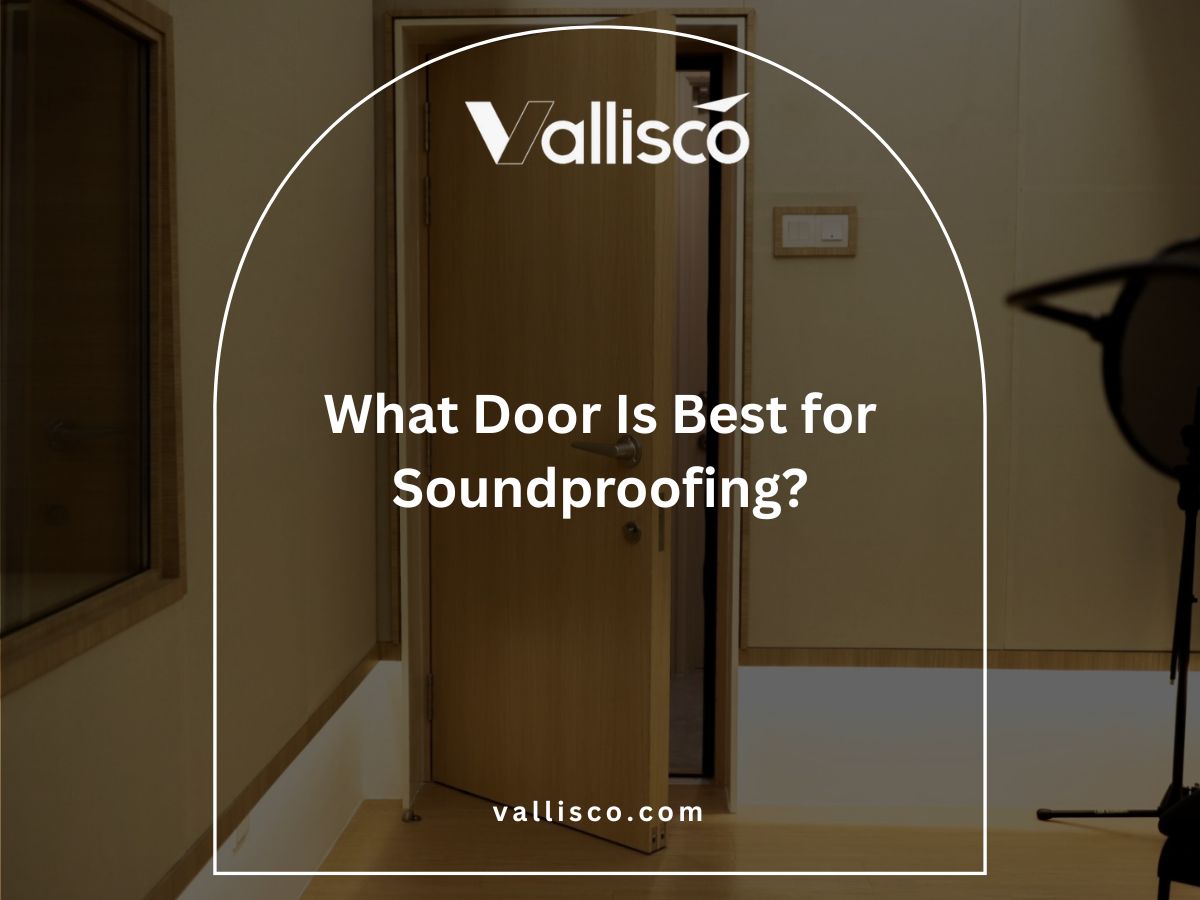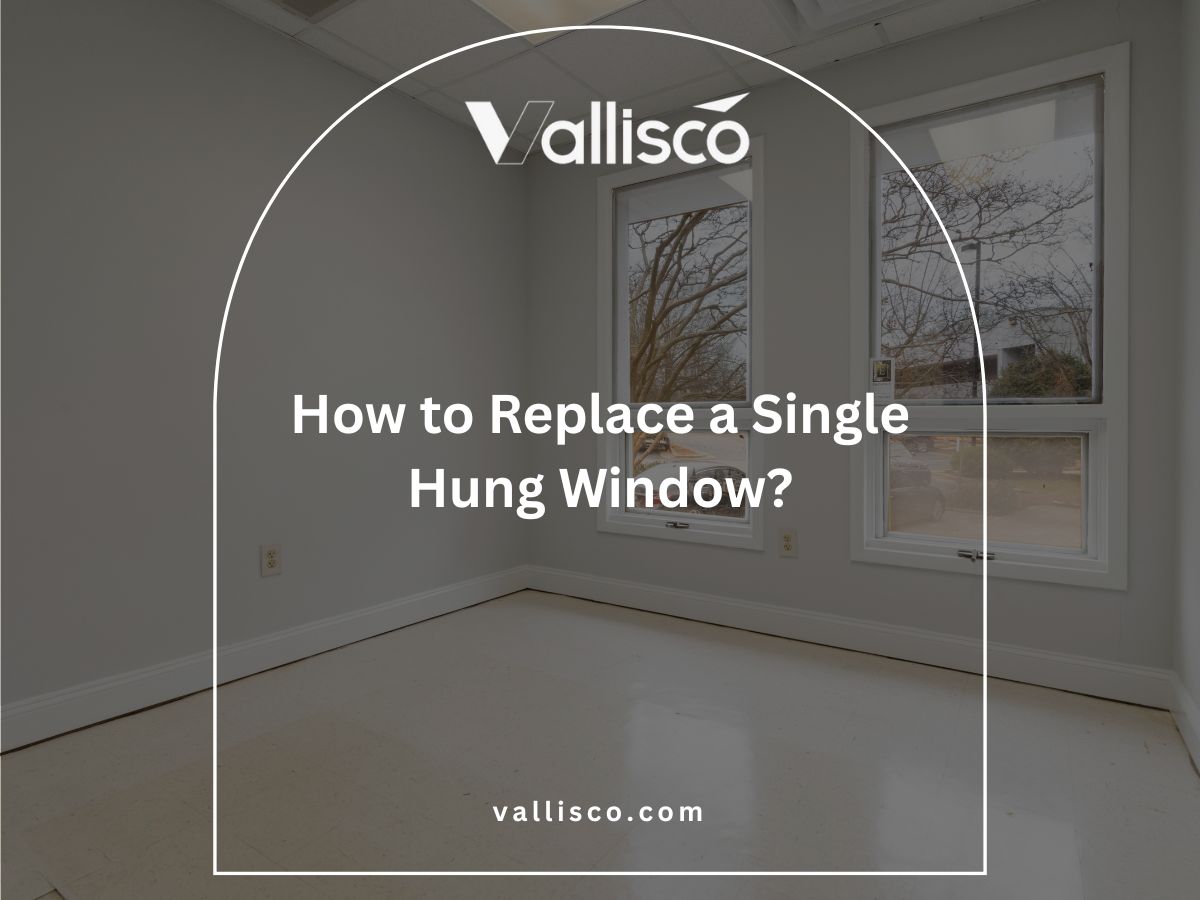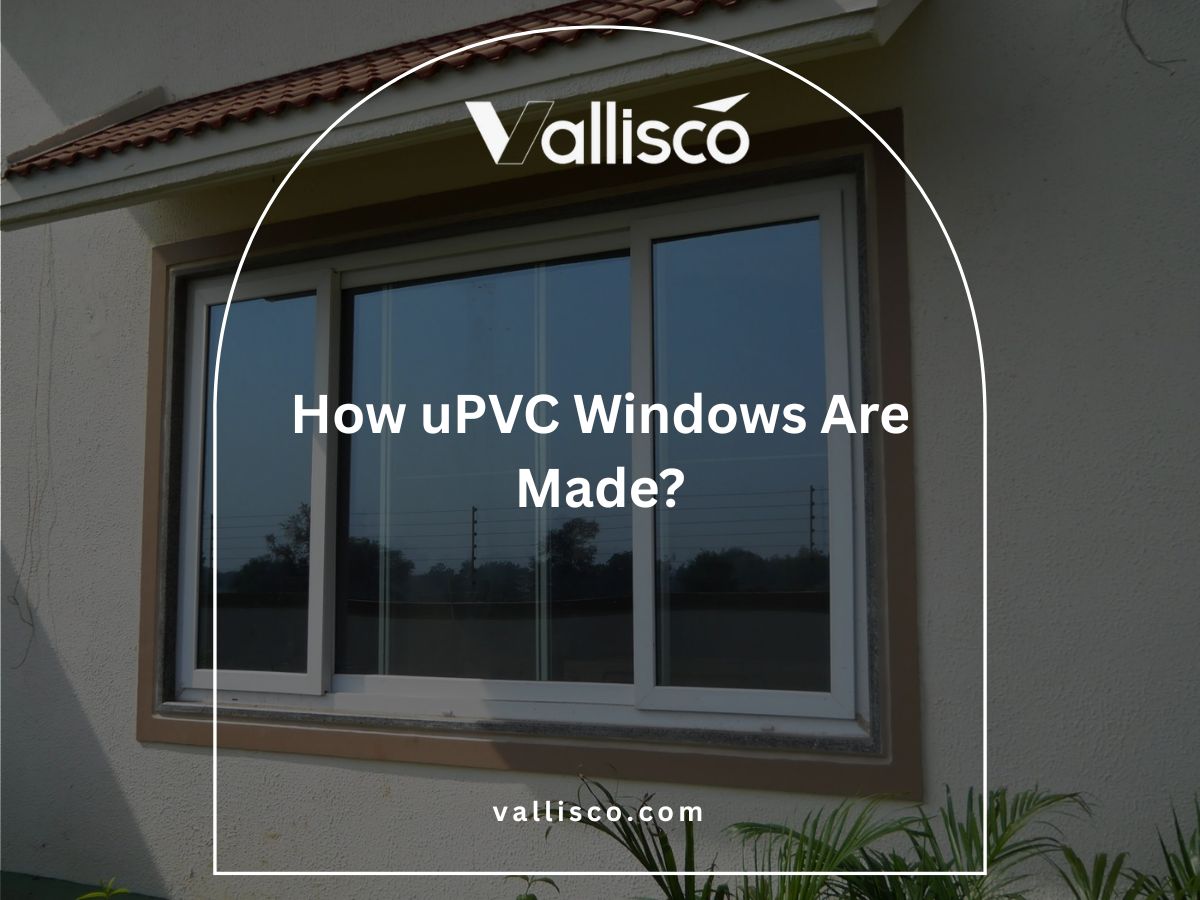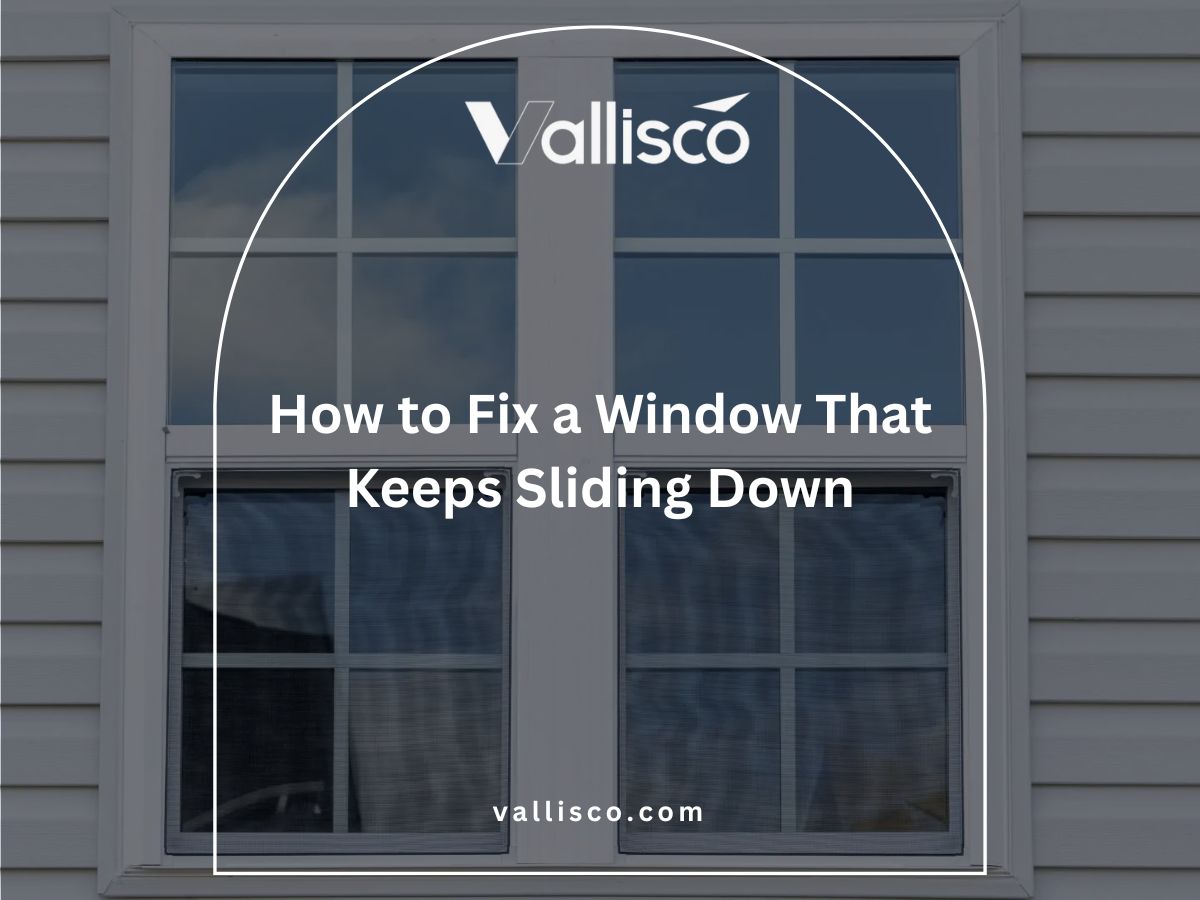I’ve walked into offices where the first thing I noticed wasn’t the reception desk or the décor it was the door. Sometimes it shook in the frame when it closed.
Other times, the finish was scratched and faded, even though it was barely a year old. Like it or not, that first glance told me a lot about the place before anyone even said hello.
I’ve worked on plenty of spaces where the right door changed everything. I’ve seen it make rooms quieter, keep a steady temperature, and stand up to years of daily use without losing its look. Those details matter, especially in a busy commercial setting.
You’re here because you need more than a basic entryway. You want something that looks good, lasts, and supports the way your business runs.
In this guide, I’ll share 10 commercial office doors that do exactly that so you can compare and choose the one that fits your needs for security, comfort, and style.
By the end, you’ll have the insight to make a confident choice and the right tools to match the perfect door to your space.
So let’s begin!
Quick Comparison Chart
Need a quick overview before diving deeper?
This table gives you a snapshot of how each commercial office door type stacks up in terms of style, strength, and where it works best.
| Door Type | Best For | Pros | Watch Outs | Style Level |
| Aluminum Glass Doors | Bright, modern offices | Clean look, lets in light, pairs with glass | Low sound privacy, shows fingerprints | Modern |
| Frameless Glass Doors | High-end spaces | Sleek, open feel, minimal framing | Poor sound control, needs careful install | High-End |
| Solid Core Wood Veneer Doors | Traditional, private offices | Sturdy feel, warm wood look | Needs upkeep, can warp in humidity | Classic |
| Laminate Flush Doors | Budget projects, staff areas | Affordable, easy to clean | Can chip, low sound resistance | Simple |
| Fire-Rated Doors | Code-required areas, exits | Safety, code-compliant, durable | Needs special install, limited styles | Varies |
| Acoustic Doors | Meeting rooms, therapy offices | Blocks sound, adds privacy | Higher cost, needs seals and good install | Professional |
| Automatic Sliding Glass | Lobbies, shared entrances | Hands-free, smooth traffic flow | Pricey, motor needs upkeep | Modern |
| Steel Doors | Storage, utility, high-use areas | Strong, secure, fire-rated ready | Industrial look, may dent or rust | Basic |
| FRP (Fiberglass) Doors | Humid, high-traffic back areas | Tough, moisture-proof, long lifespan | Limited design options, industrial vibe | Functional |
| Custom Panel Doors | CEO offices, reception, brand image | Unique style, visual impact | Expensive, longer lead time | Premium |
Now that you’ve got the big picture, let’s walk through each door style one by one.
1. Aluminum Glass Office Doors
Aluminum glass doors combine a lightweight aluminum frame with clear or frosted glass panels, creating a modern and professional look. They bring in natural light while still separating spaces, which is why they’re common in both small and large offices. The aluminum frame offers strength without bulk, keeping the design open instead of closed off. With the right finish and glass type, they can work in almost any office style.
Benefits
- Improved Aesthetics: These doors give a sleek, polished appearance that can instantly upgrade a workspace. The glass allows light to pass through, helping rooms feel larger and more open.
- Durability: Aluminum frames resist rust, warping, and dents, making them well-suited for high-traffic areas. They maintain their appearance even with constant use.
- Natural Light: Large glass panels let in daylight, reducing the need for artificial lighting. This makes the space brighter and more pleasant for both employees and visitors.
Features to Look For
- Frame Quality: Thicker aluminum frames provide better stability and can handle heavier glass without bending. A strong frame also helps the door last longer.
- Glass Type: Tempered glass is stronger than standard glass, while laminated glass has a safety layer that keeps it together if broken. Laminated glass also improves sound control.
- Finish Options: Powder-coated and anodized finishes protect the frame from scratches and fading. These finishes come in a variety of colors to match your interior.
- Thermal Performance: Frames with thermal breaks reduce heat transfer, helping maintain comfortable indoor temperatures throughout the year.
Best Use Cases
- Reception Areas: Creates a strong first impression and makes the space feel open. Visitors can see into the office before entering.
- Conference Rooms: Balances openness and privacy when paired with frosted or tinted glass. Allows natural light in while keeping conversations private.
- Hallway Dividers: Keeps areas visually connected while defining work zones. Maintains an open feel without losing structure.
Final Thought
Aluminum glass office doors offer a balance of style, light, and durability that works well in many professional settings. However, they might not be ideal for areas requiring complete privacy or top-level security. Many projects I’ve worked on have used aluminum glass doors from Vallisco because they combine long-term performance with a design that fits a range of business environments.
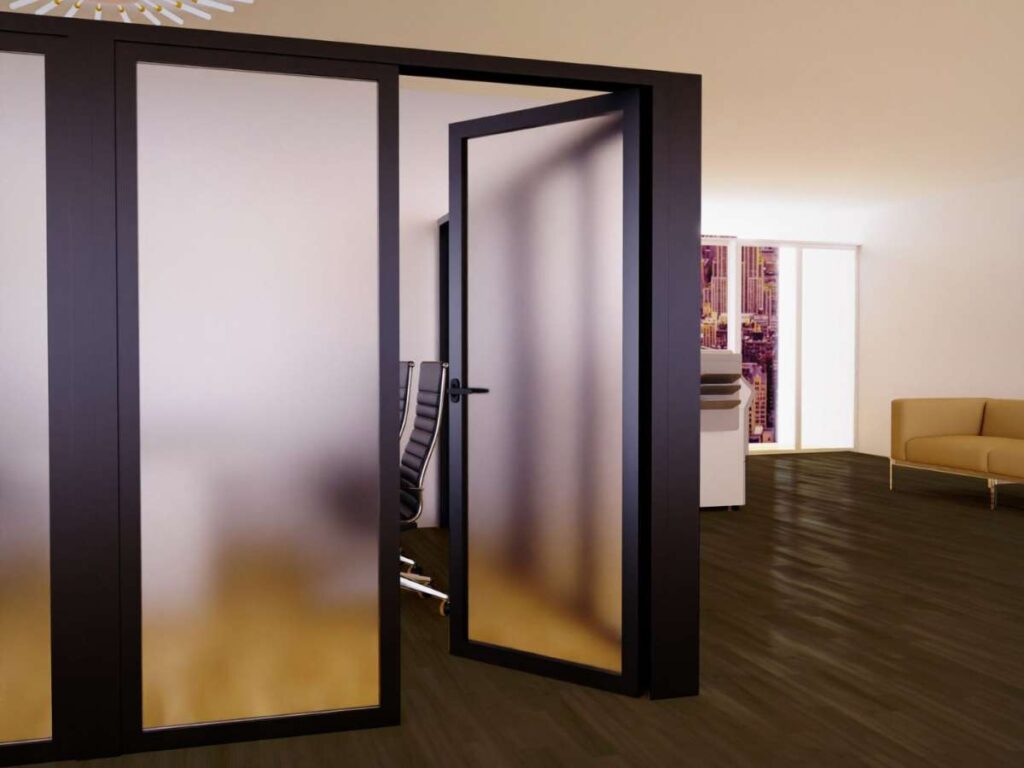
2. Solid Core Wood Veneer Doors
Solid core wood veneer doors have a sturdy inner core, often made of particleboard, MDF, or mineral core, with a thin layer of real wood on the outside. This design gives you the warmth and texture of natural wood without sacrificing strength. I have seen them hold up in busy office corridors, still looking refined years later with only light maintenance.
Benefits
- Premium Appearance: The natural wood veneer creates an upscale and professional look. It can be stained or finished in various tones to match existing interiors, giving your space a cohesive feel.
- Sound Control: The dense inner core offers better noise reduction than hollow-core doors. This makes them ideal for meeting rooms, executive offices, or any area where privacy is important.
- Longevity: Solid core construction resists dents, warping, and surface wear. With occasional refinishing, these doors can last for decades in a commercial setting.
Features to Look For
- Core Type: Particleboard cores offer good sound control, MDF cores have a smoother surface for veneers, and mineral cores add fire resistance. Your choice will depend on the specific needs of your building.
- Veneer Quality: Look for thick, high-grade veneers that can be sanded and refinished. Thicker veneers allow for more touch-ups over time without exposing the core.
- Finish Options: Stains and clear coats can highlight the wood grain while adding protection. Some finishes also improve scratch resistance, which is helpful in high-traffic areas.
- Edge Construction: Solid wood edges can better withstand impacts and reduce veneer chipping along the sides of the door.
Best Use Cases
- Executive Offices: Adds a sense of sophistication and professionalism to private workspaces.
- Boardrooms: Helps block sound from leaving or entering the room, supporting confidential conversations.
- Hotel or Hospitality Suites: Provides a high-end feel while offering durability for frequent use.
Final Thought
Solid core wood veneer doors combine a natural look with the durability to handle heavy daily use. They work best in spaces where both style and performance are valued. However, their weight means you will need proper installation and sturdy hardware to get the best results.
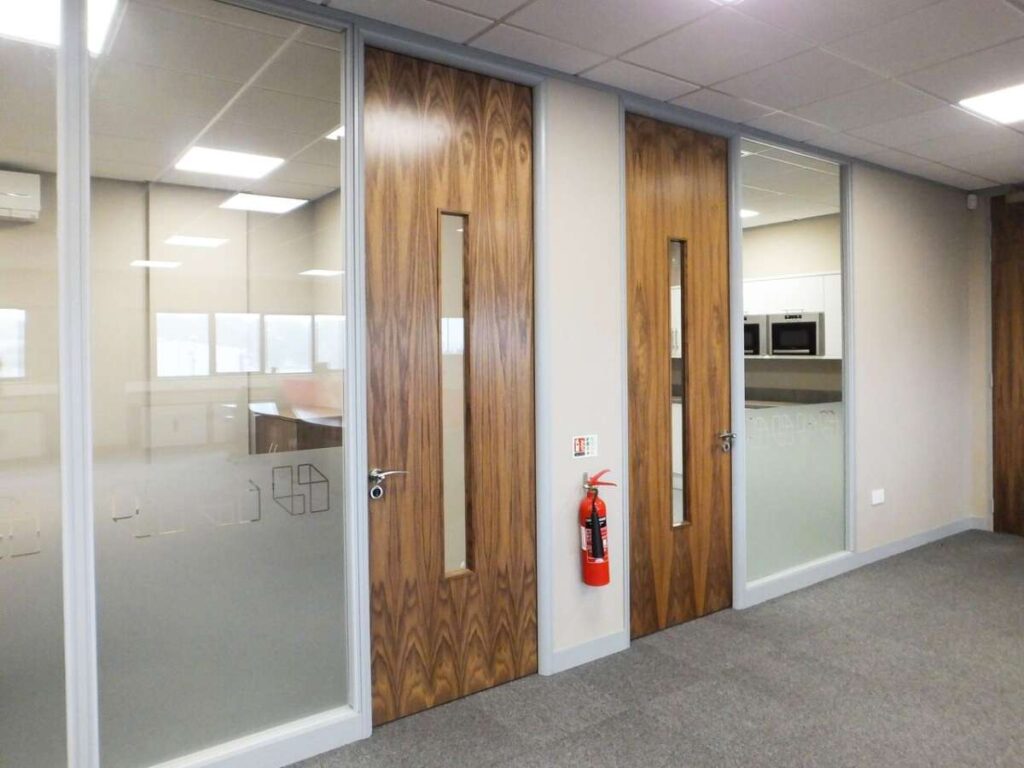
3. Steel Office Doors
Steel office doors are built from heavy-gauge steel sheets formed over a solid or insulated core. They are known for their strength, durability, and ability to handle constant use without losing their shape. I have worked on projects where a steel door installed years ago still looked and functioned like new, even in high-traffic areas.
Benefits
- High Security: Steel doors offer a level of protection that most other materials cannot match. Their solid construction makes them resistant to forced entry, which is essential for safeguarding valuable assets.
- Long Lifespan: The material is resistant to warping, cracking, and rotting, even in challenging environments. With proper care, these doors can serve reliably for decades.
- Low Maintenance: Steel surfaces require minimal upkeep compared to wood or glass. Regular cleaning and occasional touch-up paint are often enough to keep them in excellent condition.
Features to Look For
- Steel Gauge: Lower gauge numbers mean thicker and stronger steel. Heavier gauges are ideal for maximum security and high-traffic applications.
- Core Type: Honeycomb cores provide lightweight strength, insulated cores improve thermal performance, and solid cores maximize security.
- Finish Options: Factory-applied paint or powder coating protects against rust and scratches. These finishes also allow you to match the door to your office’s color scheme.
- Hardware Compatibility: Choose doors that can support heavy-duty hinges, locks, and closers for better performance and longevity.
Best Use Cases
- Main Entrances: Steel doors provide a secure and professional entry point for your building. Their durability means they can handle hundreds of openings and closings each day without losing their alignment.
- Storage or Equipment Rooms: These doors protect valuable equipment, documents, or supplies from theft and damage. The solid construction also helps maintain controlled environmental conditions inside the room.
- Service Areas: Ideal for loading docks, utility spaces, or maintenance areas that see constant use. They resist damage from impacts, moisture, and temperature fluctuations better than many other materials.
Final Thought
Steel office doors deliver a balance of security, durability, and low maintenance that is hard to beat. They are especially valuable in areas where safety and protection are top priorities. However, their heavier weight means you will need sturdy frames and hardware to support them properly.
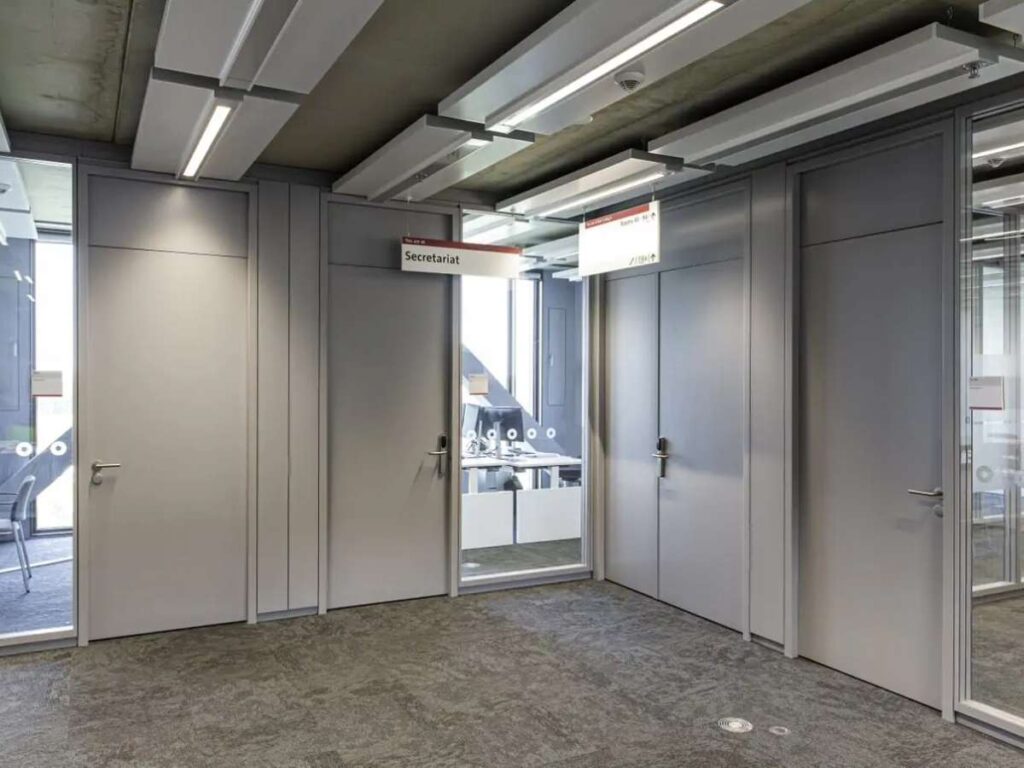
4. Laminate Flush Doors
Laminate flush doors have a smooth, flat surface covered with a laminate sheet, which is a durable synthetic layer bonded to a core material like MDF, particleboard, or solid wood. They are known for their clean, uniform look and resistance to scratches, stains, and moisture. I have recommended them to clients who wanted an affordable yet attractive door for busy office areas, and they’ve held up well even with heavy daily use.
Benefits
- Affordability: Laminate flush doors are cost-effective compared to solid wood or metal options. They provide a polished look without the higher price tag, making them ideal for large office projects.
- Low Maintenance: The laminate surface is easy to clean with basic household or commercial cleaners. It resists stains and fingerprints, which is helpful in high-traffic spaces.
- Design Versatility: Available in a wide range of colors, textures, and patterns. You can choose finishes that mimic wood grain or go for bold, modern colors to match your branding.
Features to Look For
- Laminate Quality: High-pressure laminate (HPL) offers better durability than low-pressure laminate (LPL). HPL is thicker and more resistant to wear.
- Core Type: Particleboard cores are affordable and stable, while MDF cores provide a smoother surface for applying laminate.
- Edge Protection: Look for PVC or hardwood edge banding to prevent chipping and improve impact resistance.
- Moisture Resistance: Some laminates are specially treated to handle humidity, which can extend the door’s lifespan in certain environments.
Best Use Cases
- Break Rooms: Easy-to-clean surface makes them perfect for spaces where spills and messes are common. Their durability means they hold up under constant opening and closing.
- Interior Office Doors: Suitable for separating work areas without the cost of premium materials. They provide a professional look while keeping budgets under control.
- Restroom Entrances: Laminate’s moisture resistance works well in areas exposed to humidity. It also helps maintain a fresh, clean appearance over time.
Final Thought
Laminate flush doors offer a budget-friendly way to get both style and practicality in your office. They are durable enough for busy spaces and can be customized to match almost any design theme. However, they may not have the same high-end feel as wood veneer or glass doors, so they work best in functional areas where performance matters most.
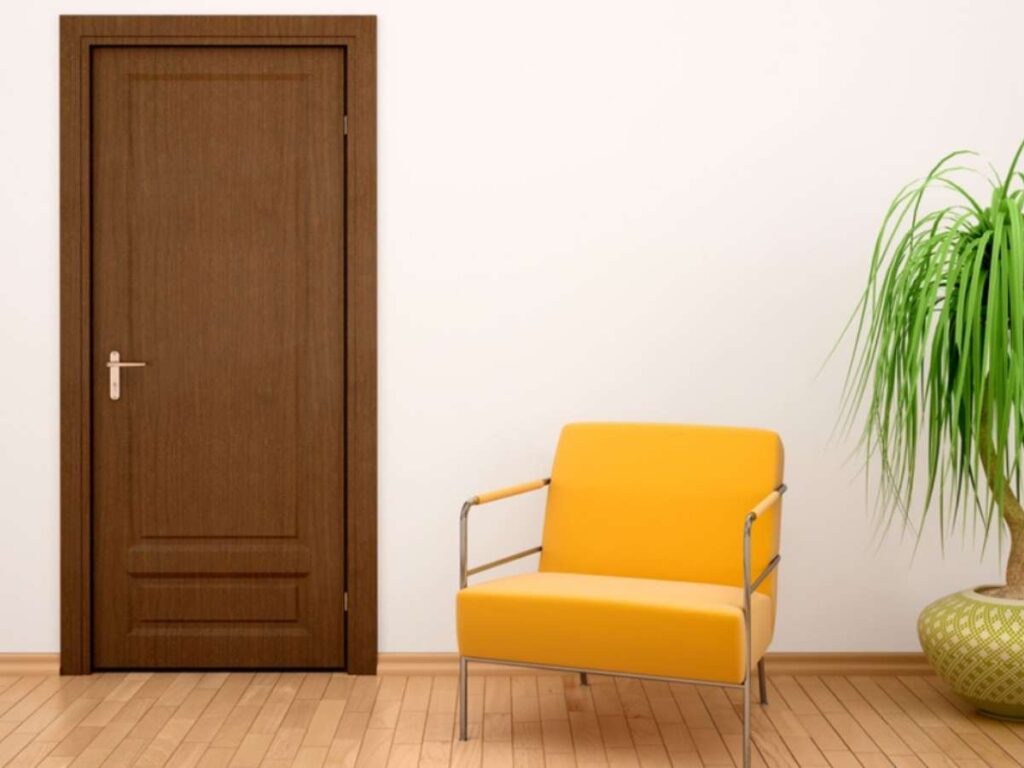
5. Fire-Rated Office Doors
Fire-rated office doors are specially constructed to slow the spread of fire and smoke for a set period, usually between 20 and 90 minutes. They are made from materials such as steel, solid wood, or composite cores with fire-resistant layers. I have seen them installed in office buildings where safety codes required them, and in real incidents, they have made a critical difference in giving people more time to evacuate.
Benefits
- Increased Safety: These doors help protect lives by holding back flames and smoke during a fire. The extra time they provide can be crucial for evacuation and emergency response.
- Code Compliance: Many commercial buildings are required by law to have fire-rated doors in certain areas. Having them in place helps you meet safety regulations without last-minute changes.
- Durability: Fire-rated doors are built to handle both everyday wear and extreme conditions. Their reinforced construction makes them last for many years in busy environments.
Features to Look For
- Fire Rating Certification: Look for ratings verified by recognized agencies such as UL (Underwriters Laboratories). This confirms the door meets tested safety standards.
- Core Material: Options include steel cores for maximum strength, mineral cores for heat resistance, and composite cores for a balance of performance and weight.
- Seals and Gaskets: Intumescent seals expand under heat, blocking smoke and flames from passing through gaps.
- Finish Options: Choose from paint-grade steel, decorative wood veneers, or laminates to match your office style.
Best Use Cases in Commercial Spaces
- Stairwells: Limits the spread of fire between floors and keeps evacuation routes safer for longer. Their strong construction also holds up under frequent use.
- Hallway Exits: Protects main passageways in multi-office buildings, helping them remain safe for people exiting during an emergency.
- Storage Rooms: Safeguards areas that contain flammable materials, reducing the risk of fire spreading quickly.
Final Thought
Fire-rated office doors provide both everyday functionality and critical protection in an emergency. They are a must-have in spaces where safety regulations and occupant protection are priorities. However, they should be installed and maintained properly so they perform as intended when it matters most.
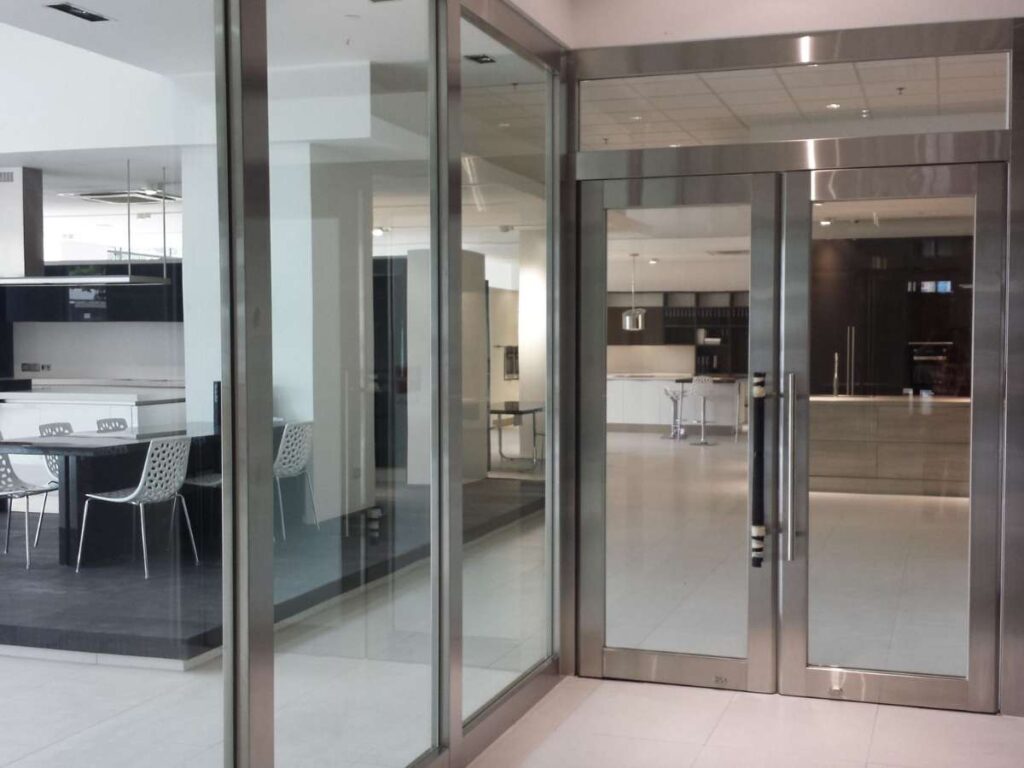
6. Frameless Glass Doors
Frameless glass doors are made entirely of thick, tempered glass without a visible metal frame around the edges. This gives them a seamless look that blends into modern office interiors. In many projects, they have turned dull, closed-off spaces into bright, open areas where natural light moves freely.
Benefits
- Modern Appearance: The sleek, borderless design adds a high-end feel to any space. It makes rooms appear larger and more open, which can improve the atmosphere for both employees and visitors.
- Light Flow: Because there is no frame blocking the glass, more daylight can move through the office. This can reduce the need for artificial lighting during work hours.
- Versatility: These doors fit a variety of styles, from corporate to creative environments. They can be combined with frosted or patterned glass to provide privacy while keeping the open feel.
Features to Look For
- Glass Thickness: Thicker glass, usually 10–12 mm, offers better strength and stability. It also reduces the risk of flexing when the door is opened or closed.
- Hardware Quality: Look for durable hinges, handles, and patch fittings made from stainless steel or other corrosion-resistant materials. Quality hardware helps the door operate smoothly over time.
- Privacy Options: Frosted sections, tinted glass, or custom designs can add visual interest and control visibility. These features are helpful in meeting rooms or private offices.
- Closing Mechanism: Floor springs or soft-closing systems help prevent slamming and reduce wear on the glass.
Best Use Cases
- Reception Entrances: Creates a welcoming first impression while letting visitors see into the space. It adds a sense of transparency and openness to the brand image.
- Conference Rooms: Encourages a light-filled environment while still allowing privacy with frosting or blinds. This balance can improve meeting productivity and comfort.
- Creative Work Areas: Inspires collaboration by connecting spaces visually while still separating noise and activity. The open feel can boost energy and creativity among staff.
Final Thought
Frameless glass doors are perfect for offices that want to combine openness with style. They bring light and elegance into the workplace, making even small spaces feel larger. However, they require careful handling during installation and daily use to maintain their pristine appearance.
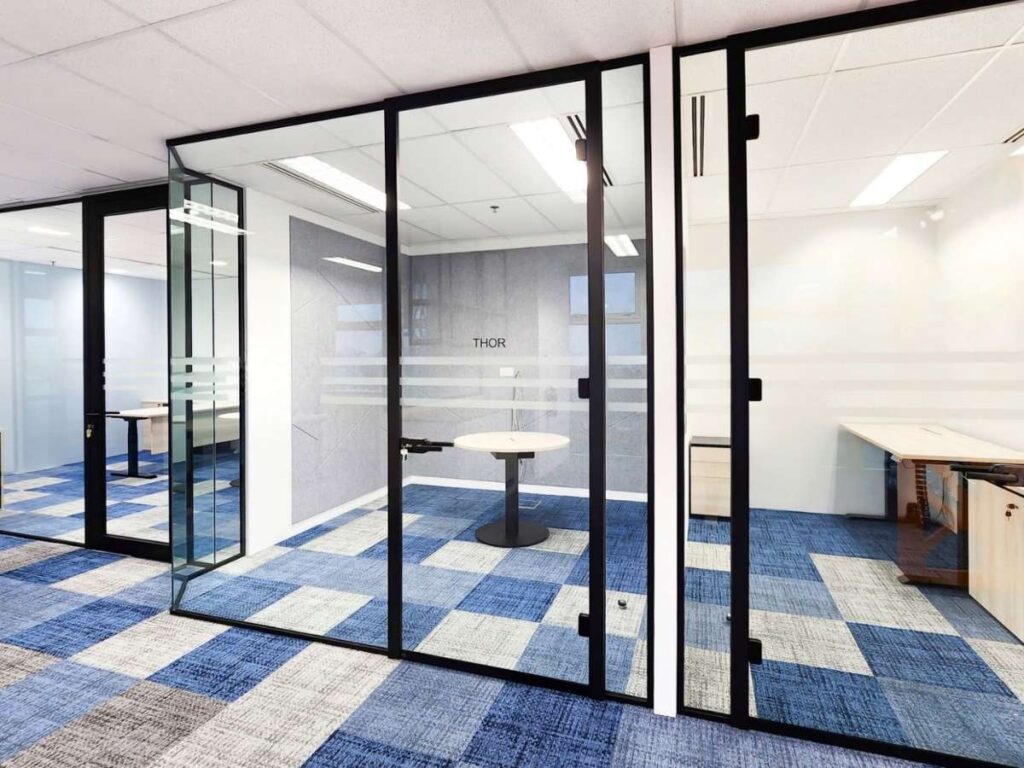
7. Acoustic Office Doors
Acoustic office doors are built to reduce sound transfer between rooms, helping create quieter and more focused work environments. They often have dense cores, special seals, and precise construction that block noise from passing through. I have worked on projects where replacing regular doors with acoustic ones instantly improved privacy and productivity in meeting spaces.
Benefits
- Noise Reduction: These doors limit how much sound passes from one space to another. This is important for areas where sensitive conversations take place or where focus is critical.
- Improved Productivity: A quieter environment can help employees concentrate better. It also reduces distractions during phone calls or meetings.
- Better Privacy: Acoustic doors make it harder for voices to carry outside the room. This helps protect confidential discussions and important business information.
Features to Look For
- Sound Transmission Class (STC) Rating: This number measures how well the door blocks sound. Higher ratings mean better soundproofing performance.
- Sealing System: Perimeter seals and drop-down bottom seals close gaps around the door. These prevent sound from leaking through small openings.
- Core Material: Solid cores made of materials like mineral wool or acoustic foam improve noise control. They also add weight, which helps block vibrations.
- Frame Construction: A strong, well-fitted frame prevents sound from passing around the door edges. This is just as important as the door itself.
Best Use Cases
- Conference Rooms: Keeps meeting discussions private while limiting outside noise. This can make conversations clearer and more productive.
- Executive Offices: Helps leaders work without constant interruptions from surrounding activity. It also creates a professional atmosphere for client meetings.
- Call Centers: Reduces the amount of noise spreading between workstations. This allows staff to focus better and improves call quality.
Final Thought
Acoustic office doors are an effective solution for improving privacy and reducing distractions. They are especially valuable in environments where communication and concentration are priorities. However, for the best results, they should be paired with proper installation and sealing techniques.
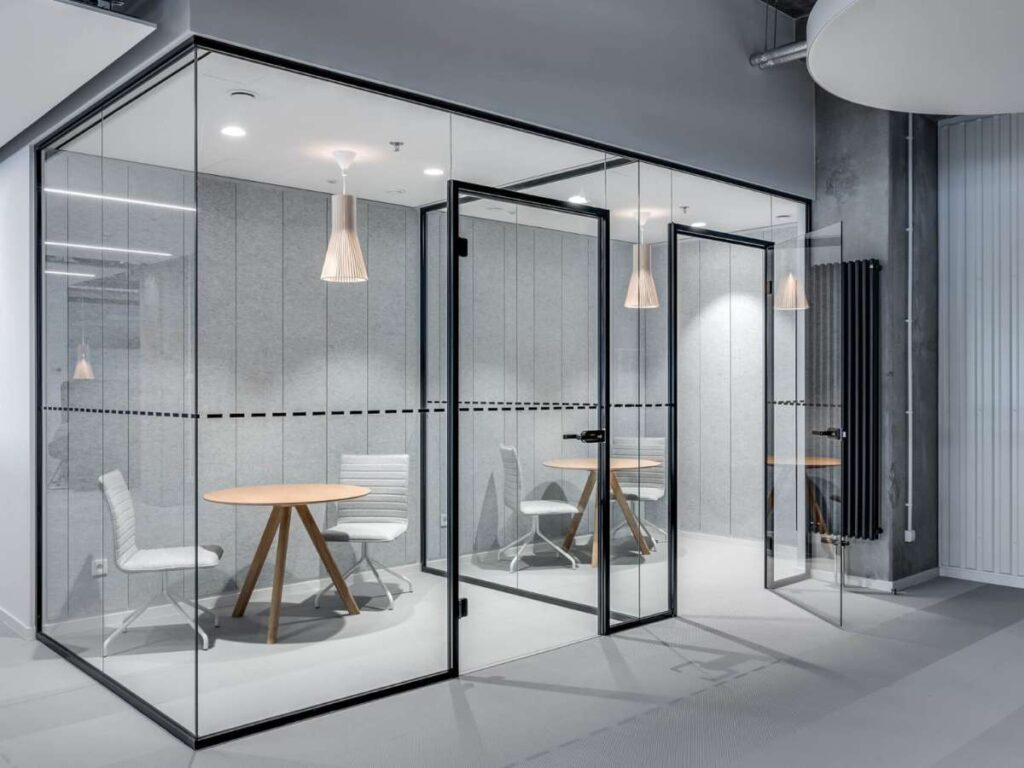
8. Automatic Sliding Glass Doors: A Simple Guide
Automatic sliding glass doors open and close without physical contact, using sensors to detect movement. They are typically made with tempered or laminated glass panels that glide along a track. In commercial settings, they offer a welcoming entrance and help maintain smooth traffic flow for both staff and visitors.
Benefits
- Convenience: These doors open automatically, making it easier for people carrying items or pushing carts to enter. They also reduce congestion during busy hours.
- Accessibility: Automatic operation supports individuals with mobility challenges. It creates an inclusive environment for everyone entering space.
- Modern Appeal: The sleek, moving panels add a polished look to the building. They also showcase a company’s commitment to efficiency and customer experience.
Features to Look For
- Sensor Quality: Motion or presence sensors should respond quickly and accurately. High-quality sensors reduce delays and prevent accidental closures.
- Safety Features: Built-in safety systems detect obstructions and stop the door from closing on people or objects. This is essential in high-traffic areas.
- Glass Type: Tempered or laminated glass offers both durability and safety. Laminated options also improve noise control and security.
- Energy Performance: Look for models with tight seals to minimize air leakage. This can help maintain indoor temperatures and lower energy costs.
Best Use Cases in Commercial Spaces
- Main Entrances: Creates a professional and inviting entry point while managing steady visitor traffic. It also helps regulate climate control in buildings.
- Retail-Style Offices: Encourages foot traffic by providing a clear, open view of the interior. The smooth operation adds to customer experience.
- Conference Centers: Allows large groups to move in and out quickly during events. It minimizes bottlenecks and improves flow between sessions.
Final Thought
Automatic sliding glass doors combine style, convenience, and accessibility in one solution. They help create a welcoming atmosphere while keeping people moving efficiently. However, they work best when installed with high-quality sensors and maintained regularly to keep performance consistent.
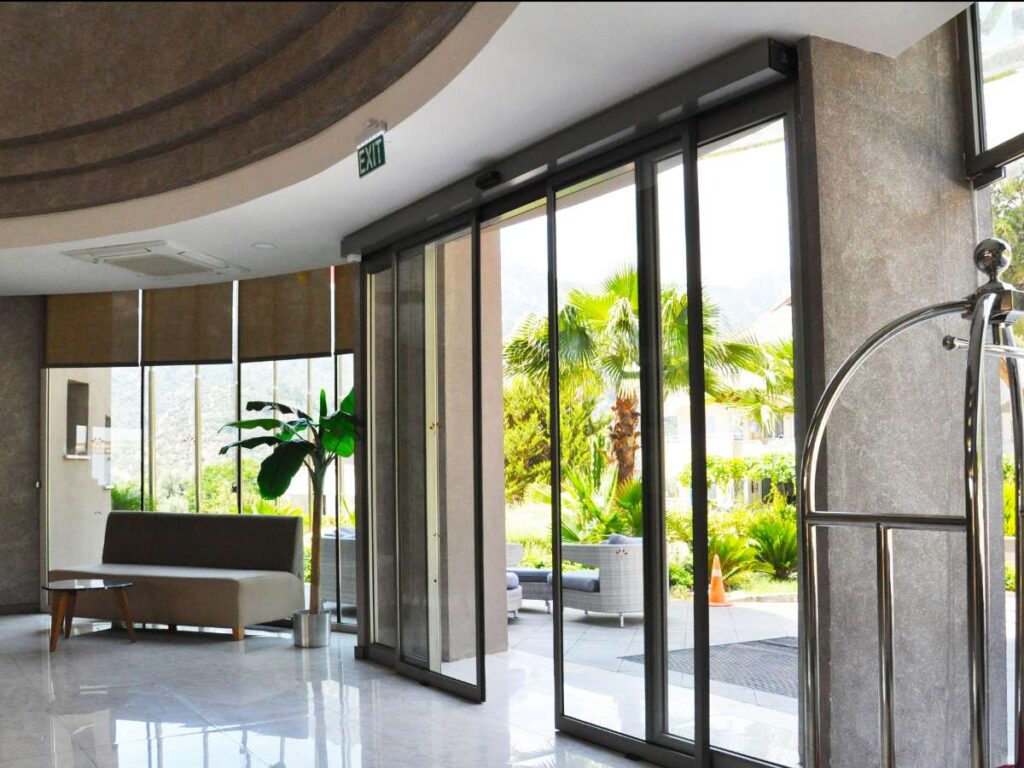
9. Fiberglass Reinforced Doors (FRP)
Fiberglass reinforced doors, often called FRP doors, are built with a fiberglass skin bonded to a solid core. The result is a door that can take a lot of wear without bending, cracking, or losing its finish. In many demanding commercial settings, these doors keep performing long after other materials start showing their age.
Benefits
- High Durability: FRP doors stand up well to dents, scratches, and corrosion. Even in areas where doors take daily abuse, they maintain their structure and appearance.
- Low Maintenance: The surface cleans easily with mild detergent and water. No repainting, refinishing, or constant touch-ups are needed.
- Moisture Resistance: These doors will not swell, warp, or rot when exposed to water or humidity. This makes them a dependable choice for locations where moisture is a constant factor.
Features to Look For
- Core Material: Foam cores add insulation and reduce weight, while solid cores provide maximum strength and impact resistance.
- Surface Texture: Smooth finishes make cleaning quick, while textured surfaces hide marks from heavy use.
- Color and Finish Options: Factory-applied finishes keep their color over time, even with exposure to sunlight or harsh cleaning products.
- Edge Protection: Reinforced or capped edges help protect against repeated impact from carts, equipment, or heavy use.
Best Use Cases
- Industrial Offices: Ideal for areas where moving equipment and heavy traffic are part of daily operations. They withstand impacts that would damage most other doors.
- Service Entrances: Handles outdoor exposure and constant deliveries without showing signs of wear. This keeps the space looking professional year-round.
- Healthcare Facilities: Stays clean and undamaged despite frequent sanitizing. The non-porous surface supports a sterile, hygienic environment.
Final Thought
Fiberglass reinforced doors combine toughness with a long service life, even in harsh conditions. They are the kind of choice you make once and don’t have to think about for years. However, if you want the warmth of natural wood or glass, you may prefer to use them in more functional areas rather than for statement entries.
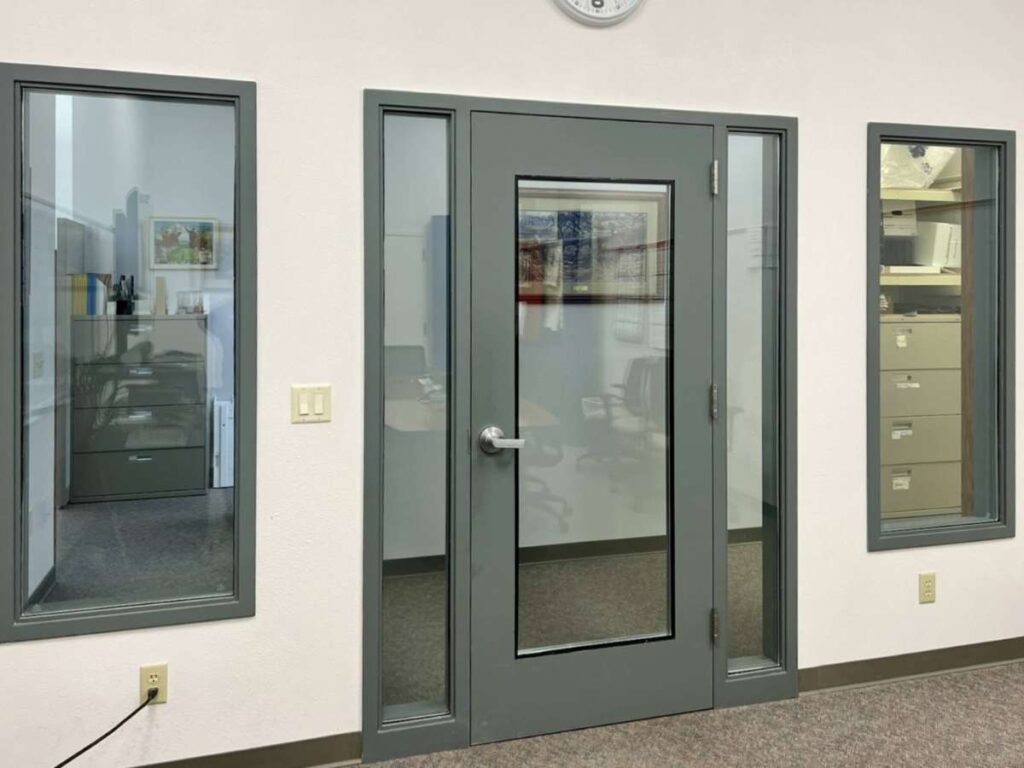
10. Custom Panel Doors
Custom panel doors are built to order, allowing you to select the design, materials, and details that match your exact vision. They can feature single or multiple panels, glass inserts, or decorative moulding, all crafted to suit your space. In offices where branding and aesthetics matter, these doors can tie the entire design together.
Benefits
- Design Flexibility: You can choose the panel layout, finish, and hardware to match your interior style. This flexibility makes it possible to create a door that feels like it belongs to space.
- Material Options: From solid wood to composite materials, you can select the construction that balances durability, cost, and appearance. This helps you meet both functional and design goals.
- Enhanced Branding: Custom panels allow for unique details, such as incorporating company colors or matching architectural elements. This reinforces the identity of your workspace.
Features to Look For
- Panel Configuration: Decide on the number, size, and shape of panels. Raised panels add depth, while flat panels create a sleek, modern look.
- Material Quality: High-grade woods, durable composites, or metal accents can improve both longevity and visual appeal.
- Finish and Color Choices: Stains, paints, and custom finishes allow you to blend the door seamlessly with surrounding décor.
- Hardware Compatibility: Ensure the design accommodates your choice of hinges, handles, and locking systems without compromising the look.
Best Use Cases
- Executive Offices: Creates a distinct, high-end entrance that sets the tone for space. It can also reflect the personality or role of the occupant.
- Conference Rooms: Add visual presence to important meeting spaces. The design can complement the room’s interior for a cohesive feel.
- Reception Areas: Make a strong first impression by tying in with the reception desk and overall lobby design. This can enhance how visitors perceive the company.
Final Thought
Custom panel doors offer the chance to combine craftsmanship with personal style. They work especially well when you want a door to be part of the overall design rather than just a functional piece. However, they often take longer to produce and may cost more than standard options, so planning ahead is important.
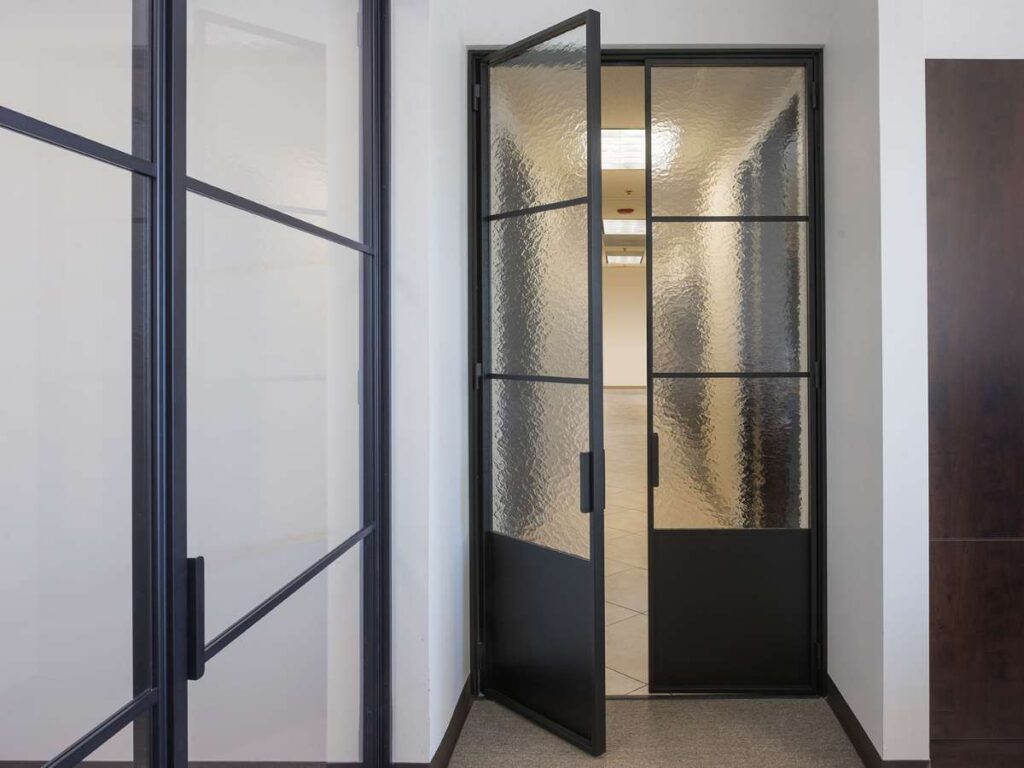
How to Choose the Right Commercial Office Doors
Picking the right commercial office door shapes how your space looks, works, and feels. A well-chosen door can improve security, control noise, and elevate the overall design.
The best choice comes from matching the door’s purpose with the right materials, design, and performance features. When you take the time to align these factors, you get a solution that lasts and adds to the character of your space.
- Purpose of the Door: Identify whether the door’s main role is security, style, noise control, or accessibility. Knowing its primary function helps you focus on features that matter most.
- Material Selection: Different materials, such as steel, glass, wood, or fiberglass, have unique strengths. Match the material to your environment to avoid issues with durability, maintenance, or climate.
- Traffic Volume: Consider how many people will pass through the door daily. High-traffic areas need stronger construction and better hardware to handle constant use.
- Aesthetic Goals: Think about how the door will fit into your office design. A well-chosen door can make a space feel more inviting or professional, depending on your vision.
- Budget and Long-Term Value: Look at both the initial cost and the expected lifespan. Sometimes spending more upfront can save on replacement and repair costs later.
Choosing a commercial office door is an investment in both function and appearance. The right choice keeps your space secure, comfortable, and stylish. Vallisco, a leading door and window manufacturer, can help you find the perfect fit for your business.
Conclusion
We’ve explored ten types of commercial office doors, from sleek glass designs to durable steel and FRP options. Each has its own strengths, uses, and style.
When I first worked on a large office project, I learned that the right door doesn’t just open a room it shapes how people feel inside it.
Now you know what to look for and how to choose.
So, what will your next door say about your space?
Let’s create an entrance worth noticing.
Contact vallisco today and let’s get started.
Learn More: Recommended Reads
Want to see more products? We’ve got plenty of options that might just be the perfect fit for you:
Still haven’t found what you’re looking for? Don’t hesitate to contact us. We’re available around the clock to assist you.



